March 13 - 19, 2016: Issue 255
TIVKIN CEMETERY
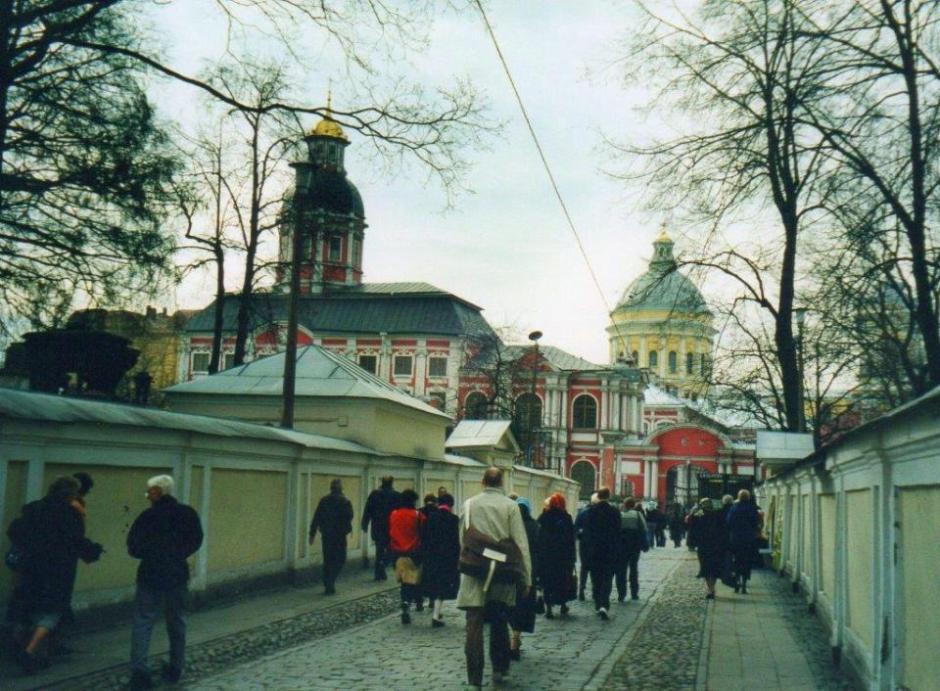
Approaching the Alexander Nevsky Cathedral. The wall of the Tivkin Cemetery on the right.
TIKVIN CEMETERY
By George Repin
The Alexander Nevsky Monastery in St. Petersburg, where the relics of the Saint are preserved, is a major place of pilgrimage for Russians. Popular polls have declared him to be the greatest Russian hero in history, recognising him for the defeat he inflicted on invading armies of Swedes and Teutonic Knights on 5 April 1242 and the accommodations he had previously wisely entered into with theGolden Horde which freed him to marshal the people of Novgorod ‘to repel what he believed to be the greater threat to Rus’.
The Alexander Nevsky Monastery was founded by Peter the Great in 1710 on the site where he believed, wrongly, that one of Alexander Nevsky’s earlier crucial battles over the Swedes had been won in 1240. The first wooden Church of the Annunciation on the site was consecrated in 1723 in the presence of the Czar. The relics of Nevsky, who had been buried in Vladimir, were transferred to the monastery in 1724 by decree of Peter the Great. Alexander Nevsky had been canonised as a saint of the Russian Orthodox Church in 1547.
The epic motion picture Alexander Nevsky, made in 1938 by Sergei Eisenstein includes extensive dramatic scenes, lasting about half an hour, of “The Battle on the Ice” on Lake Peipus. These have served as a model for such scenes in many later movies. The stirring musical score by Sergei Prokofiev was subsequently reworked by him into a concert cantata.
While the Cathedral of Alexander Nevsky attracts many visitors, the major attractions for others are the monastery’s graveyards and in particular the Tikvin Cemetery which contains graves of many famous Russians, notably composers. The following are among those buried there:
Mily Alexandrovitch BALAKIREFF 1837-1910
The central figure, from 1861, in the famous “Five” – Cui, Mussorgsky, Rimsky-Korsakoff and Borodin – all of whom were importantly influenced by him. Best known for his tone poem Islamay.
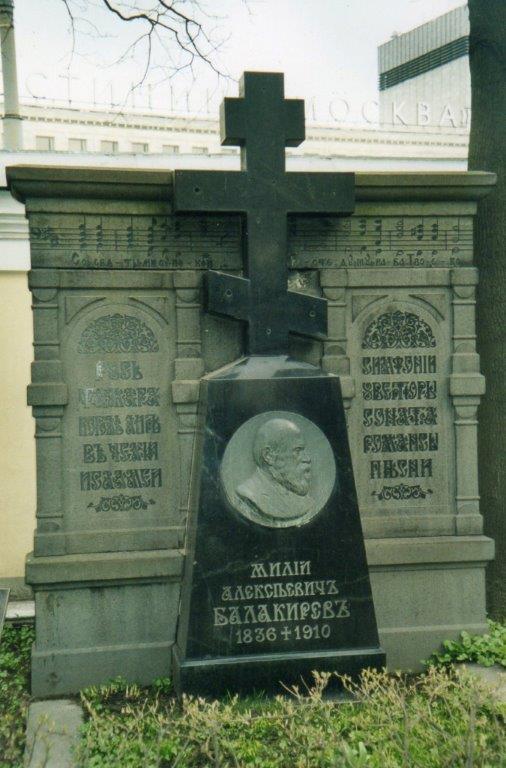
BALAKIREFF 1837-1910
Alexander Porphyrievitch BORODIN 1833-1887
Produced an amazing number of enduring works despite music not being his prime occupation. He was a doctor and a scientist. His works are staples of the concert repertoire including the Polovtsian Dances, In the Steppes of Central Asia and his second symphony. The musical score of the stage show Kismet is based on Borodin’s music.
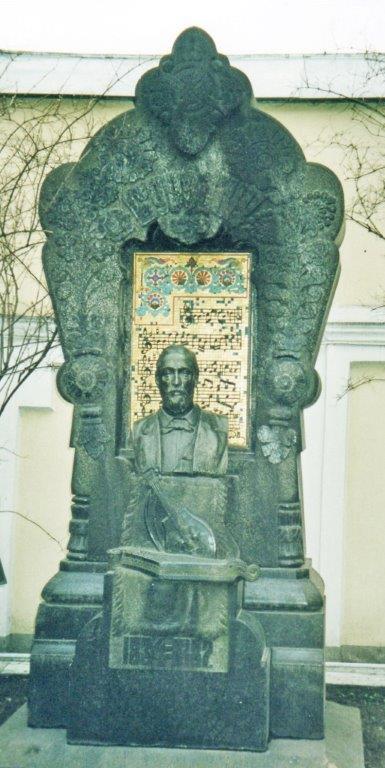
BORODIN 1833-1887
Michael Ivanovitch GLINKA 1804-1857
Although his musical output was small, as he was a dilettante lacking self- discipline and steadfast application, he is generally regarded as the founder of the Russian national school, being the first composer to endow music with a definite national character. Best remembered for his operas A Life for the Tsar and Ruslan and Ludmilla.
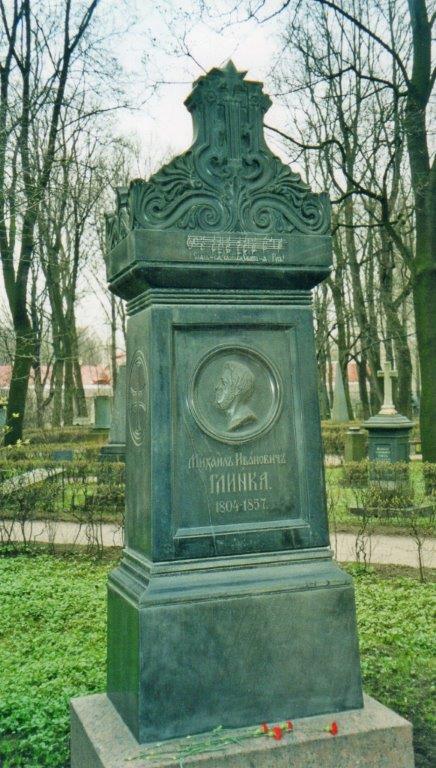
GLINKA 1804-1857
Modest Petrovitch MUSSORGSKY 1839-1881
Best known to Western audiences for his masterpiece the opera Boris Godunov and A Night on the Bare Mountain he left a large body of songs. As a songwriter he was unique. A troubled soul, plagued by poverty and alcohol he left significant unfinished works, some of which were completed by others, not without controversy.
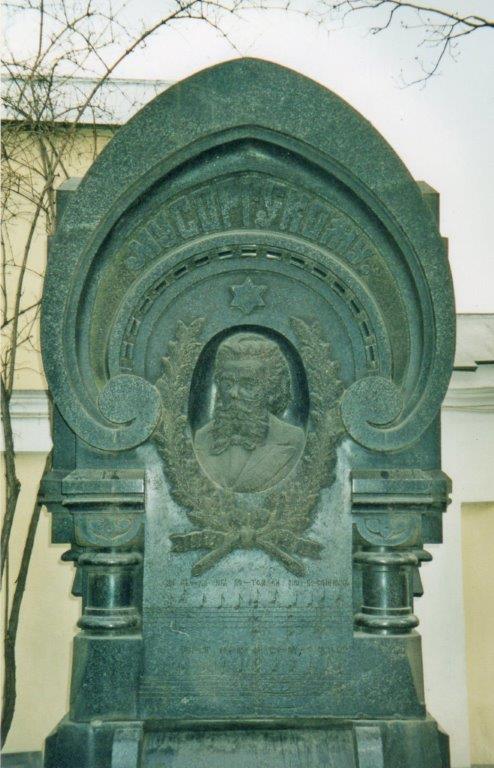
MUSSORGSKY 1839-1881
Nicholas Andreevitch RIMSKY-KORSAKOFF 1844-1908
In an essay about him Gerald Abraham wrote:
“Rimsky-Korsakoff was a better all-round composer than any of his colleagues of the Russian national school though a less truly original spirit than either Mussorgsky, Borodin or Balakireff. None of his operas is as fine as Boris Godunov; his symphonies are inferior to Borodins; his songs to Balakireff’s or Mussorgsky’s. But his work as a whole practically sums up the aesthetic contribution to music of the entire group”.
His symphonic suite Scheherazade is popular with Western audiences.
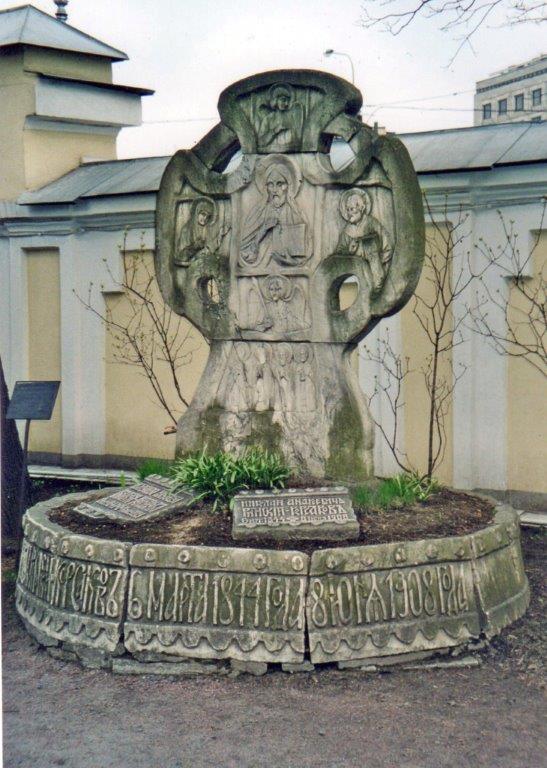
RIMSKY-KORSAKOFF 1844-1908
Peter Ilich TCHAIKOVSKY 1840-1893
Much of his music is familiar to Western audiences because of the frequency with which it appears on concert programmes – particularly the Piano Concerto No. 1, the Violin Concerto in D Major and his 5th and 6th Symphonies. His music for the ballets Swan Lake, The Sleeping Princess and The Nutcracker is frequently heard - as are the symphonic poem Francesca da Rimini and the fantasy overtureRomeo and Juliet. His operas Eugene Onegin and The Queen of Spades are often performed. At the end of 1890 following the breakdown of the relationship with his patron Mme. von Meck he became despondent. Finally, he became depressed by the poor reception of the first performance of his 6th Symphony and deliberately drank a glass of untreated water. He died of cholera on 6 November, 1893.
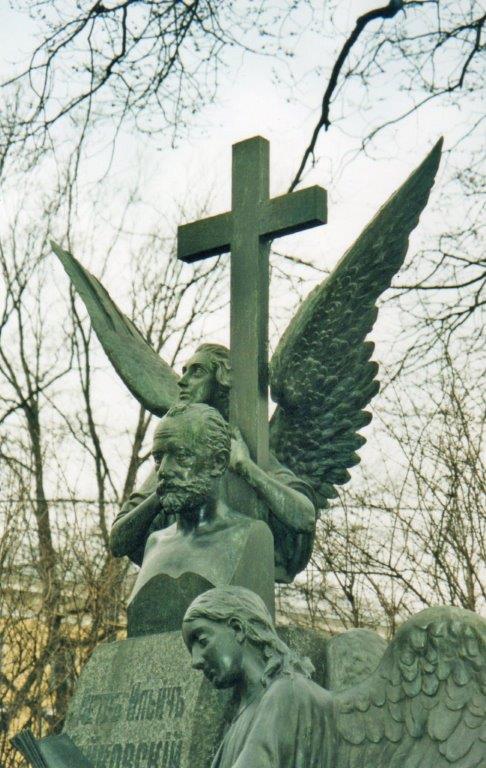
TCHAIKOVSKY 1840-1893
The novelist Fedor DOSTOEVSKY, author of Crime and Punishment and The Brothers Karamazov also is buried in the Tivkin Cemetery.
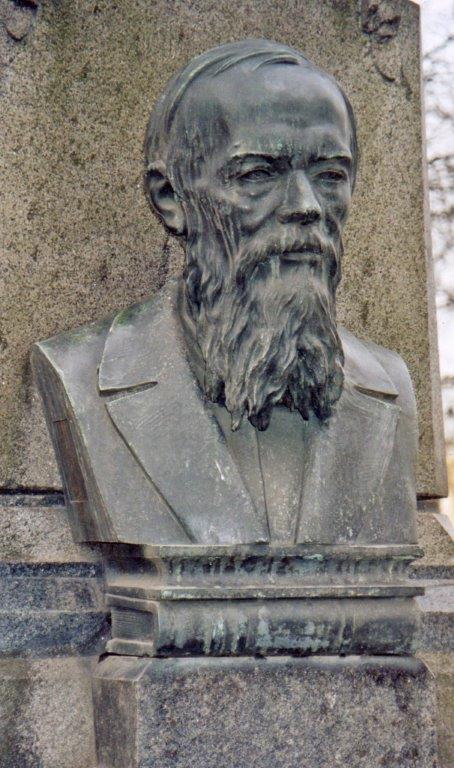
DOSTOEVSKY 1821-1881
Photographs by George Repin in May 2005.
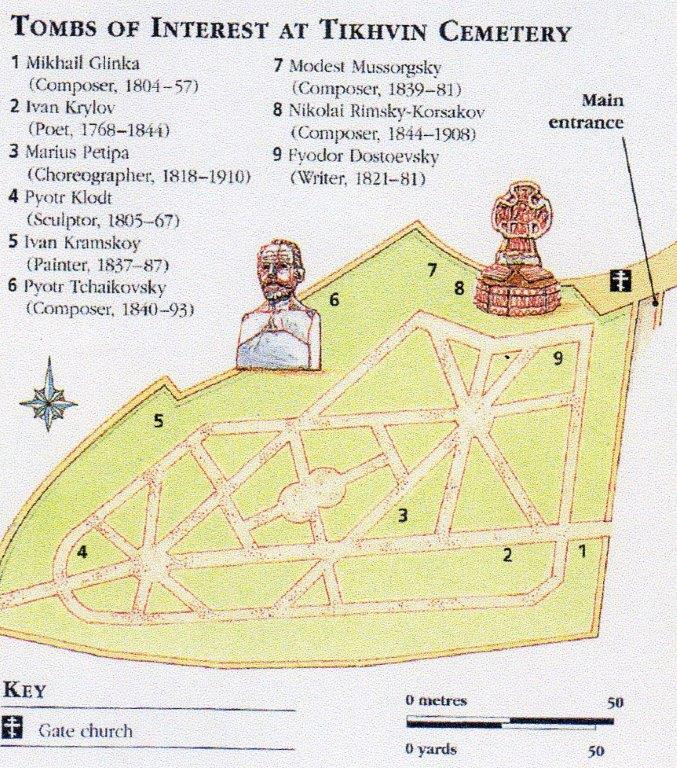
Locations of tombs in the Tivkin Cemetery
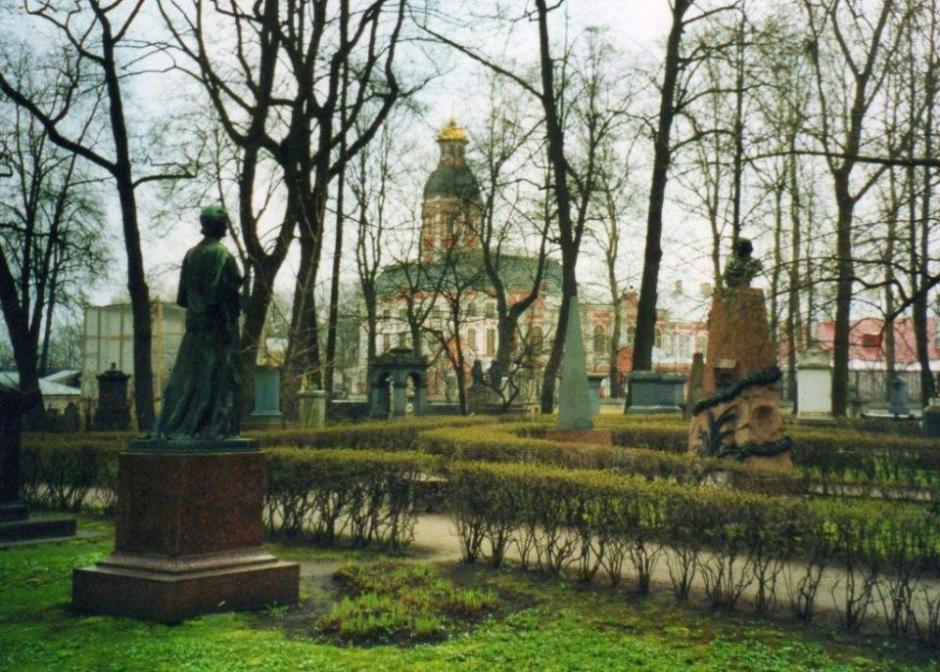
View towards the cathedral complex from the Tivkin Cemetery
Alexandre Nevski (Aleksandr Nevskii) - 1938 - Sergeï Eisenstein - VOSTFR
Previous Reflections by George Repin
The Nineteen Thirties Remembering Rowe Street The Sydney Push Saturday Night at the Movies Shooting Through Like A Bondi Tram A Stop On The Road To Canberra City Department Stores - Gone and Mostly Forgotten An Australian Icon - thanks to Billy Hughes Crossing The Pacific in the 1930s Hill End The Paragon at Katoomba Seafood In Sydney How Far From Sydney? Cockatoo Island Over The Years The Seagull at the Melbourne Festival in 1991 Busby's Bore The Trocadero In Sydney Cahill's restaurants Medical Pioneers in Australian Wine Making Pedal Power and the Royal Flying Doctor Service Pambula and the Charles Darwin Connection Gloucester and the Barrington Tops A Millenium Apart Have You Stopped to Look? Gulgong Il Porcellino Olympia Durham Hall Sargent's Tea Rooms Pie Shops and Street Photographers The Ballet Russes and Their Friends in Australia Hotels at Bondi Alma Ata Conference - 1978 Keukenhof - 1954 The Lands Department Building and Yellowblock Sandstone The Goroka Show - 1958 A Gem On The Quay Staffa The Matson Line and Keepsake Menus Kokeshi Dolls The Coal Mine At Balmain The Hyde Park Barracks The Changing Faces Of Sydney From Pounds and Pence to Dollars and Cents Nell Tritton and Alexander Kerensky Making A Difference In Ethiopia William Balmain J C Bendrodt and Princes Restaurant Azzalin Orlando Romano and Romano's Restaurant Waldheim Alcohol in Restaurants Before 1955 King Island Kelp The Mercury Theatre Around Angkor - 1963 Angkor Wat 1963 Costumes From the Ballets Russe Clifton at Kirribilli Chairman Mao's Personal Physician The Toby Tavern The MoKa at Kings Cross The Oceaographic Museum in Monaco The Island of Elba Russian Fairy Tale Plates Meteora Souda Bay War Cemetery Barrow, Alaska Cloisonné Tripitaka Koreana Minshuku The Third Man Photographs and Memories Not A Chagall! Did You Listen? Did You Ask? Napier (Ahuriri, Maori) New Zealand Borobudur Ggantija Temples Plumes and Pearlshells Murano University of Padua Ancient Puebloe Peoples - The Anasazi Pula The Gondolas of Venice Cinque Terre Visiting the Iban David The Living Desert Bryce Canyon National Park Aphrodisias The Divine Comedy Caodaism Sapa and local Hill People A Few Children Cappadocia Symi Jean-Marie Tjibaou Cultural Centre Aboriginal Rock Art on Bigge Island ANZAC Cove (Ari Burnu) 25 April, 1997 Hotere Garden Oputae Children of the Trobriand Islands Page Park Market - Rabaul Rabual Kotor, Montenegro Galleries of Photographs I Lascaux Galleries of Photographs II The Cathedral of St. James – Šibenik, Croatia Ivan Meštrović - Sculptor Delphi Gallery of Photographs III The Handicrafts of Chiang Mai Raft Point San Simeon - "Hearst Castle" Floriade - The Netherlands - 1982 Russian New Year Mycenae "Flightseeing" Out Of Anchorage Alaska The White Pass and Yukon Route Totem Poles
Copyright George Repin 2016. All Rights Reserved.